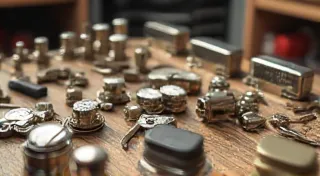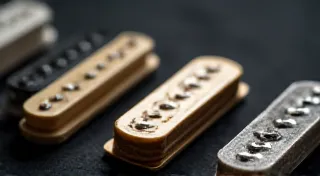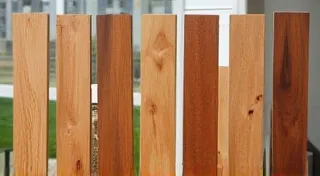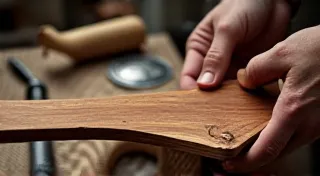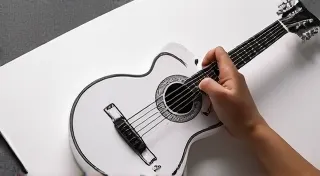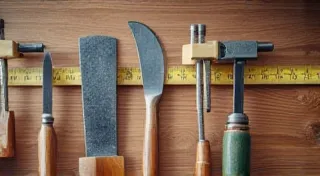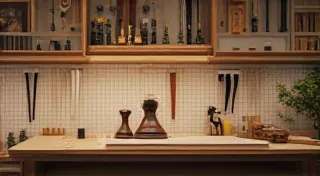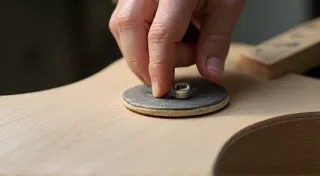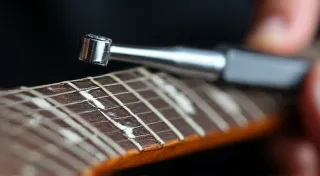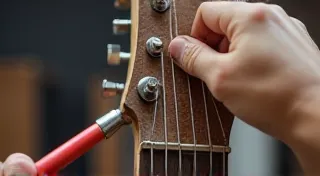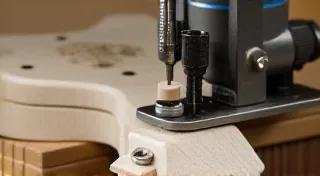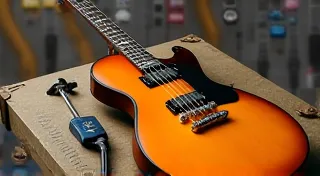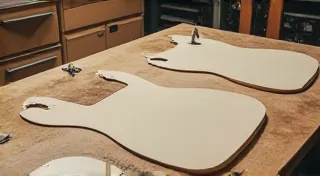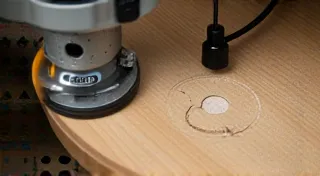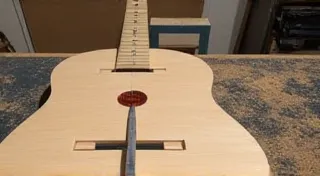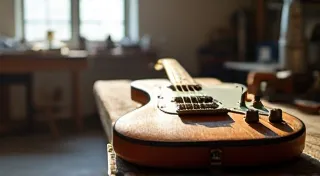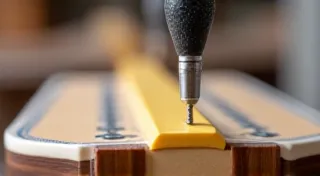Building Your Own Electric Guitar: A Comprehensive Guide
Welcome! This site is dedicated to helping you build your own electric guitar. Whether you're a complete beginner or have some experience, we’re here to guide you through every step of the instrument building process, from selecting the right wood to performing a final setup. Building your own guitar is a deeply rewarding experience – a chance to learn new skills, express your creativity, and ultimately, own an instrument you built with your own hands. Join the growing community of DIY guitar enthusiasts and unlock endless possibilities with guitar projects! This isn't just about assembling parts; it's about understanding the principles of sound, resonance, and craftsmanship.
Getting Started: Tools, Wood, and Plans
Before you even pick up a piece of wood, it's crucial to have a plan. A rushed build often leads to frustration and compromised results. We recommend starting with our guide to Designing Your Own Simple Guitar Plans. Understanding ergonomics, scale length, and pickup placement are fundamental. Even if you choose a readily available plan, understanding the 'why' behind the dimensions is valuable. Consider the intended musical style – a heavier build might be suitable for metal, while a lighter build might be better for jazz. Scale length (typically 25.5” for Fender-style guitars and 24.75” for Gibson-style) significantly impacts string tension and feel. A longer scale length requires heavier gauge strings for the same tuning.
Next, gather your essential tools for beginner guitar builders. Don't underestimate the value of quality tools. While you can start with budget-friendly options, investing in better tools as you progress will make the process more enjoyable and yield better results. Basic necessities include a jigsaw, drill, router (optional but highly recommended for shaping and routing), clamps, measuring tools (ruler, calipers), files, sandpaper, and safety equipment (eye protection, dust mask). A digital multimeter is invaluable for checking wiring and electronics. A good set of hand saws and chisels are also useful for fine adjustments. A budget-friendly list can be found here: Essential Tools for Building Your First Electric Guitar: A Budget-Friendly List or Essential Tools for Building Your First Electric Guitar: A Budget-Friendly List. Don't forget about a good workbench - a stable and well-lit workspace is critical.
Choosing the right wood is vital to the final sound and look. Different woods impart distinct tonal qualities and aesthetic characteristics. Mahogany offers warmth and sustain, Alder is balanced and versatile, Ash is bright and resonant, and Maple is known for its clarity and attack. The specific grain pattern and density of the wood also impact the tone. Understanding wood grain orientation is important to prevent cracking and warping. Start with our guide to Choosing Your First Guitar Wood: A Beginner's Guide or delve deeper with Choosing Your Wood for a DIY Electric Guitar: Tonewoods for Beginners. Consider the subtle, yet significant impact of The Wood’s Memory: Echoes of the Forest in a Hand-Built Instrument. Kiln-dried wood is generally preferred to minimize the risk of cracking and shrinking after the guitar is built. Learn to identify different wood species and their properties.
The Build Process: Step-by-Step
Once you have your materials and tools, the real fun begins. We’re here to guide you through each stage of the build. Let’s break down the process into logical steps:
1. Neck Construction
The neck is arguably the most important part of the guitar. It's the foundation of playability and intonation. This stage involves a number of important steps, including Guitar Neck Construction: A Step-by-Step Guide and Installing a Truss Rod: A Detailed Walkthrough. A properly installed truss rod allows for adjustments to counteract string tension and ensure optimal neck relief. The neck angle is also crucial for proper action and string angle over the bridge. Understanding neck profiles (C, D, U, V) and their impact on playing comfort is also essential. The type of wood used for the neck greatly affects its stability and tonal characteristics. Rosewood, ebony, and maple are common choices for fretboards.
Proper installation is essential, and to get your neck just right, see Neck Angle & Action: Getting Your First Electric Guitar Playable. Fretwork is an art in itself – proper leveling, crowning, and polishing are critical for smooth playability. Consider the impact of different fret materials (nickel, stainless steel) on wear and feel. Accurate fret placement and intonation are paramount for accurate tuning across the fretboard.
2. Body Shaping and Assembly
Creating the body requires precision and attention to detail. The body shape influences the guitar’s resonance and aesthetics. Body thickness also affects the tone – thicker bodies generally produce more sustain. Router templates are invaluable for creating consistent body shapes. Body binding (optional) adds a refined look and helps define the edges. Consider using body contours for enhanced comfort. A comfortable guitar is a guitar you's want to play.
For beginners, a Creating a Simple Stratocaster Style Guitar Body or a Your First Guitar Build: A Telecaster Style is a great starting point. Don't forget about using Guitar Templates: Making Your Life Easier! Accurate routing for pickups, electronics, and the control cavity is critical. Body joining (if using multiple pieces of wood) requires meticulous alignment and secure clamping.
3. Wiring and Electronics
Bringing your guitar to life requires a basic understanding of electrical wiring. Basic Guitar Wiring: Humbucker vs. Single Coil will walk you through the fundamentals. Pickup selection significantly impacts the tone – humbuckers offer higher output and thicker sound, while single-coils offer brighter and more articulate sound. Capacitor values influence the tonal response of the pickups. Understanding potentiometer (pot) values and their impact on volume and tone control is essential. A shielded wire is vital to minimize hum and noise. If you need help connecting the components, check out our guide to Basic Soldering Techniques for Guitar Wiring. Proper grounding is crucial to eliminate hum and buzz. Learn about different wiring schemes (e.g., coil splitting, phase switching).
4. Headstock Creation
The headstock is an important component for both the look and functionality. It houses the tuning machines and contributes to the guitar’s overall aesthetic. Accurate drilling for the tuning machine holes is essential. Consider the impact of different headstock shapes on string tension and break angle. The headstock angle influences the string break angle over the nut.
Learn how to properly Cutting a Guitar Headstock: A Step-by-Step Guide for a professional finish. Headstock veneer (optional) adds a decorative element. Proper finishing and sealing are important to protect the headstock from moisture and damage.
5. Finishing and Setup
Once the body and neck are assembled, it's time for the finishing touches. This is where the guitar's aesthetic beauty comes to life. The finish not only protects the wood but also influences the tone – thicker finishes generally dampen the resonance. Nitrocellulose lacquer is a traditional finish known for its warmth and vibrancy, while polyurethane finishes are more durable and resistant to chipping. We offer tips for Finishing Your Guitar: Simple and Affordable Options. Sanding is a critical step in the finishing process – proper preparation is essential for a smooth and even finish. Applying a clear coat allows you to showcase the natural beauty of the wood.
Finally, ensure your guitar plays perfectly with our comprehensive guide to Setting Up Your Guitar: Action, Intonation, and Relief. String gauge and action significantly impact playability. Accurate intonation is essential for accurate tuning across the fretboard. Setting the pickup height impacts the output and tonal balance. Don't forget calculating your Building a Simple Scale Length Calculator.
Troubleshooting and Advanced Techniques
Even experienced builders encounter challenges. Our Troubleshooting Common Guitar Building Mistakes guide will help you identify and resolve common issues. Learn from the mistakes of others. For those looking to take their skills to the next level, we’re exploring how the The Fibonacci Sequence in Fretboard Geometry: A Harmonic Resonance affects the instrument and how to use a Using a Router for Guitar Building: Safety and Techniques for enhanced functionality. The possibilities are endless when pursuing instrument building and tackling rewarding guitar projects! Experiment with different pickup configurations, wiring schemes, and finishing techniques. Consider building custom components, such as bridges and pickups.
Resources and Continued Learning
Building a guitar is a journey of continuous learning. There are countless online forums, communities, and videos dedicated to guitar building. Connect with other builders, share your experiences, and learn from their expertise. Read books and articles on guitar construction and repair. Attend workshops and seminars led by experienced luthiers. The more you learn, the better your guitars will become.
Building a guitar is more than just a hobby; it's a craft, an art form, and a source of immense satisfaction. Enjoy the process, embrace the challenges, and create something truly special.
Budgeting and Material Costs
A realistic budget is crucial for a successful guitar building project. Costs can vary widely depending on the quality of materials and the complexity of the build. A basic, entry-level build can cost between $500 and $1000, while a high-end build with custom components can easily exceed $3000. Factor in the cost of wood, hardware, pickups, electronics, finishing supplies, and tools. Don't underestimate the cost of small parts, such as screws, washers, and wire. Compare prices from different suppliers to find the best deals. Consider sourcing reclaimed wood or hardware to save money.
Building a guitar is a labor of love, a testament to your creativity and craftsmanship. Enjoy the process, learn from your mistakes, and create something you can be proud of!
Building a guitar is more than just a hobby; it's a craft, an art form, and a source of immense satisfaction. Enjoy the process, embrace the challenges, and create something truly special.
Budgeting and Material Costs
A realistic budget is crucial for a successful guitar building project. Costs can vary widely depending on the quality of materials and the complexity of the build. A basic, entry-level build can cost between $500 and $1000, while a high-end build with custom components can easily exceed $3000. Factor in the cost of wood, hardware, pickups, electronics, finishing supplies, and tools. Don't underestimate the cost of small parts, such as screws, washers, and wire. Compare prices from different suppliers to find the best deals. Consider sourcing reclaimed wood or hardware to save money.
Building a guitar is more than just a hobby; it's a craft, an art form, and a source of immense satisfaction. Enjoy the process, learn from your mistakes, and create something you can be proud of!
Building a guitar is a journey, and the rewards are immeasurable. The satisfaction of playing an instrument you built yourself is truly unparalleled.
Building a guitar is more than just a hobby; it’s a craft, an art form, and a source of immense satisfaction. Enjoy the process, embrace the challenges, and create something truly special.

